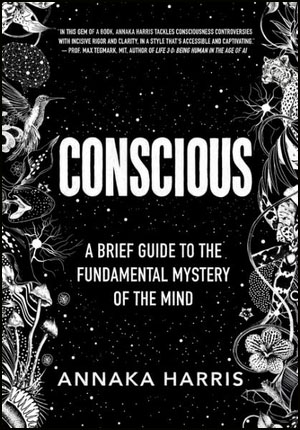974 Complexity Theory & Panpsychism
My most recent book was Annaka Harris’ Conscious, which introduced me to PANPSYCHISM.
Panpsychism is crazy, but it’s also most probably true (Aeon). Don't miss the video at the bottom: Complexity Theory & Panpsychism

MEDIUM
Alex the Younger
One day, I was having another one of my internet adventures, where I just click links and fall further into the rabbit hole, when I suddenly stumbled upon one of the coolest theories I have ever heard. You can watch the video that I found here (or below), where Neil Theise, M.D. explains the theory of panpsychism.
There has been a problem that’s plagued science and philosophy for hundreds of years. Where is the point of consciousness? At what point does something seemingly inanimate, like a rock, become conscious and aware.
The theory of panpscychism asks, what if there is no point of consciousness? What if everything is conscious?
What if everything, down to the tiniest atom, has some property of consciousness, at least to some degree. As beings become more complex this consciousness becomes more noticeable. The idea is that there is likely a wide spectrum of different kinds of consciousness. Like Thomas Nagel’s great description of consciousness, “consciousness for a bat, is simply, what it’s like to be a bat — to experience all the experiences that a bat has.”
Neil Theise uses the example of the paramecium (a single-cell being), and we have observed that when a paramecium bumps into a boundary, there is a visible chemical process that allows it to take in information about its surroundings. The membrane will flatten and form a channel that allows calcium to flow in. This is a signal to the paramecium that there is a boundary here, and the cilia will reverse, pushing the cell backwards, and then it’s on its way again. But not in the direction of the boundary, it knows not to go that way. So this whole process seems like it’s thinking. It’s not a bold leap to say that it is actually thinking, but in a very simple way. Where we have a nervous system, the paramecium has simple chemical reactions that help guide its thought process.
If we take this idea further, we see that paramecium is made up of other systems that take in information, like proteins, which sense the world through ions. Proteins are made up of smaller biomolecules and these take in information about the world through electrons. And even atoms sense the world around them through their electron shells, where they may bond with other atoms or repel other atoms based on what it’s sensing. Past this, it’s hard for us to tell what’s going on simply because we can’t even see it, but it’s possible the trend continues. I do recommend you watch Neil Theise’s video. He explains the idea in much more detail.
This is an extremely simple idea with vast consequences. It solves the problem of the origin of life, as it would mean that life is always present. But there is one important problem with this idea:
We can’t ever know if it’s correct.
If consciousness for an atom is simply, what it’s like to be a single atom — how an atom takes in information, then it seems rather unlikely, no matter how advanced we become, that we could ever morph into a single atom and live to explain what it was like being an atom. We have no real way of measuring consciousness from something that can’t communicate with us.
A very cool idea, but also very foggy.
Not foggy at all is this mind-blowing video;
Neil Theise’s bottom line I am familiar with:
Consciousness builds the universe.
This video is crazy good.
So. Cool.